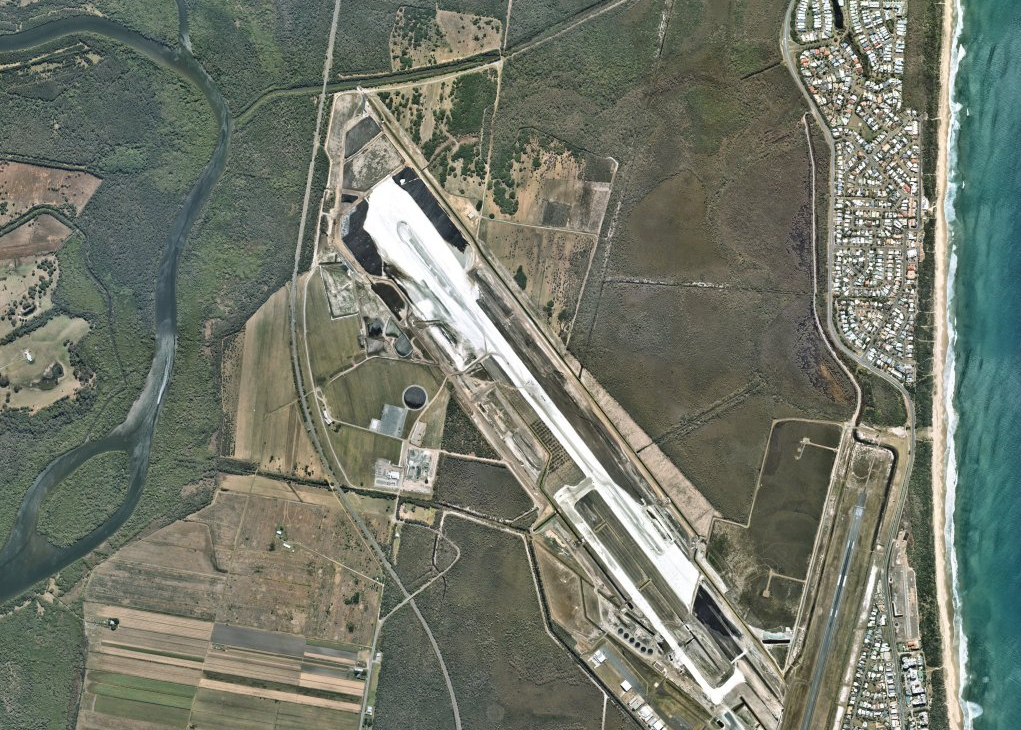PFAS Contamination On Site
PFAS Information & Management
PFAS contamination on a construction, mining, agricultural or industrial site requires an appropriate Site Water Management solution to ensure contamination is controlled prior to dewatering the site. On this page we discuss PFAS issues and the Turbid solutions appropriate to PFAS management on different types of sites.

What does PFAS stand for?
PFAS stands for per- and poly-fluoroalkyl substances and chemicals and are manufactured chemicals used in products that resist heat, oil, stains and water.
SRC: www.defence.gov.au
What is PFAS?
PFAS are per- and polyfluoroalkyl substances, a group of over 4000 chemicals. Some PFAS are very effective at resisting heat, stains, grease and water, making them useful chemicals for a range of applications including:
- Stain and water protection for carpets, fabric, furniture and apparel
- Paper coating (including for some food packaging)
- Metal plating
- Photographic materials
- Aviation hydraulic fluid
- Cosmetics and sunscreen
- Medical devices.
Because they are heat resistant and film-forming in water, some PFAS have also been used as very effective ingredients in fire-fighting foams.
SRC: pfas.gov.au
How many types of PFAS are there?
There are many types of PFASs. The best known examples are:
- perfluorooctane sulfonate, also known as “PFOS”;
- perfluorooctanoic acid, also known as “PFOA”.
Perfluorohexane sulfonate (PFHxS) is another chemical of the PFAS group and is also present in some fire-fighting foams.
SRC: health.gov.au
Is PFAS known by another name?
Until recently, this group of chemicals was known as “perfluorinated chemicals”, or “PFCs”. The name change has come about to avoid confusion with another group of chemicals that are relevant to climate change, which are also known as “PFCs”.
SRC: health.gov.au
What is PFAS used for?
PFOS and related compounds are currently imported into Australia, mainly for use as mist suppressants in the metal plating industry, hydraulic fluid in the aviation industry and surfactants in the photography industry.
PFOA and related chemicals were previously imported into Australia and used in the local manufacture of non-stick cookware. These chemicals are not present in the finished cookware.
Until recently, PFOS and PFOA were added to some types of fire-fighting foam to improve the foam’s ability to smother fires. There are believed to be stockpiles of fire-fighting foams containing PFASs still in use.
PFOS and PFOA may be present in a range of imported consumer products, although many countries have phased out, or are progressively phasing out the use of PFOS and PFOA due to concerns about their persistence, bioaccumulation and environmental toxicity.
SRC: health.gov.au
What are the problems with PFAS use?
PFASs can be released into the environment from landfill sites where products and materials that contain these chemicals are sent for disposal, and into ground and surface water through sewer discharges.
Manufacturing facilities that handle PFASs are also sources of PFAS release into the environment.
The biggest environmental concern about PFOS and PFOA is that they do not break down in the environment and can travel long distances in water and air currents. They have been shown to be widespread global contaminants and many countries are now monitoring and restricting their use.
PFOS and PFOA have been shown to be toxic to some animals, and because they don’t break down they can bioaccumulate and biomagnify in some wildlife, including fish. This means that fish and animals higher in the food chain may accumulate high concentrations of PFOS and PFOA in their bodies.
The toxicity, mobility, persistence and bioaccumulation potential of PFOS and PFOA pose potential concerns for the environment and for human health.
SRC: health.gov.au
How long does PFAS last for?
PFAS are persistent – they don’t break down.
Sunshine Coast Airport
The construction of the Sunshine Coast International Airport has involved media and public debate about PFAS issues.

Is PFAS toxic?
PFAS is toxic to some animals. Because they don’t break down they can bioaccumulate and biomagnify in some wildlife, including fish.
SRC: health.gov.au
What are the sources of PFAS?
PFAS sources include some packaging, pesticides, paint and stain-removal products, firefighting foams and in the photography industry.
SRC: www.defence.gov.au
Why is PFAS found at airports?
Legacy firefighting foams containing perfluorooctane sulfonate (PFOS) and perfluorooctanoic acid (PFOA) as active ingredients were once used extensively worldwide and within Australia, including at Defence bases, due to their effectiveness in fighting liquid fuel fires.
SRC: www.defence.gov.au
What causes PFAS contamination?
In addition to contamination from the use of fire-fighting foams, PFASs can be released into the environment from landfill sites where products and materials that contain these chemicals are sent for disposal, and into ground and surface water through sewer discharges.
Manufacturing facilities that handle PFASs are also sources of PFAS release into the environment.
SRC: health.gov.au
What will happen if I am exposed to PFAS?
The general public are exposed to small amounts of PFOS or PFOA in everyday life through exposure to dust, indoor and outdoor air, food, water and contact with consumer products that contain these chemicals. Studies have shown that Australians have small amounts of PFOS and PFOA in their blood. Where larger quantities of PFOS and PFOA have been released into the environment, communities located near those sites may be exposed to higher levels than the general public.
SRC: health.gov.au
How do PFASs affect human health?
Whether PFOS or PFOA cause health problems in humans is currently unknown, but on current evidence from studies in animals the potential for adverse health effects cannot be excluded. Because the elimination of PFASs from the human body is slow there is a risk that continued exposure to PFOS and PFOA could cause adverse health effects.
Adverse health effects have been demonstrated in animal studies, but at higher levels than are found in people. As well, the applicability of the effects in animals to humans is not well established.
The existing limited studies on PFHxS suggest that this chemical can cause effects in laboratory test animals similar to the effects caused by PFOS. However, based on available studies, PFHxS appears to be less potent in animal studies than PFOS.
Much of the research on humans has been done with people who were exposed to relatively high levels of PFASs through their work. Workers involved in the manufacture or use of PFASs usually have higher blood PFAS levels than the general public. Studies on PFAS workers have looked for effects on cholesterol levels, male hormones, heart disease, liver changes and other effects, including cancer. These studies have not consistently shown that PFAS exposure is linked to health problems.
SRC: health.gov.au
Can PFOS or PFOA cause human cancers?
In humans, there is no conclusive evidence that PFASs cause any specific illnesses, including cancer.
SRC: health.gov.au
How Can Turbid Water Solutions Help With PFAS Contamination?
Turbid Water Solutions can help with PFAS site water management by evaluating the contamination and designing an appropriate solution for your site. Depending on the disposition of the site, we deploy an appropriate Site Water Management Solution. Our solutions include Sediment Basin Solutions, Industrial Solutions and Advanced Temporary Solutions, or a hybrid approach. We help our clients achieve a smart, automated and compliant approach to site-water management contamination issues.
The stages of a Turbid Site Water Management Solution include:

a) Control
Site water links a site to the environment. Whether it arises from stormwater, groundwater or process-related sources, the physical control of site water is essential to manage the relationship between site operations and the environment beyond the site. Its also necessary for continual and predictable site operations. Our team designs and implements systems to manage and control water on-site.

b) Treat
Water treatment may be necessary to remove sediment or contaminants from the site. In the case of PFAS contamination, a testing programme would be implemented to determine the scale of contamination prior to the implementation of an appropriate treatment method for the site. Our product suite is deployed to facilitate water treatment including automation, monitoring and reporting to help you to ensure a compliant result.

c) Dewater
Dewatering is the process of removing water from the site. With PFAS contamination this process is undertaken following treatment measures to remove PFAS to a safe level. Turbid works with our clients towards compliant, effective dewatering solutions which are responsive to stormwater events.
Links For Further Reading
Working with Turbid
Evaluate Contamination
Design and Implement a Solution
Supply Equipment & Products
Provide Expertise & Support
Ensure Compliance
